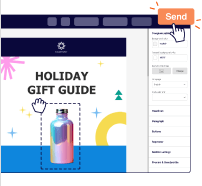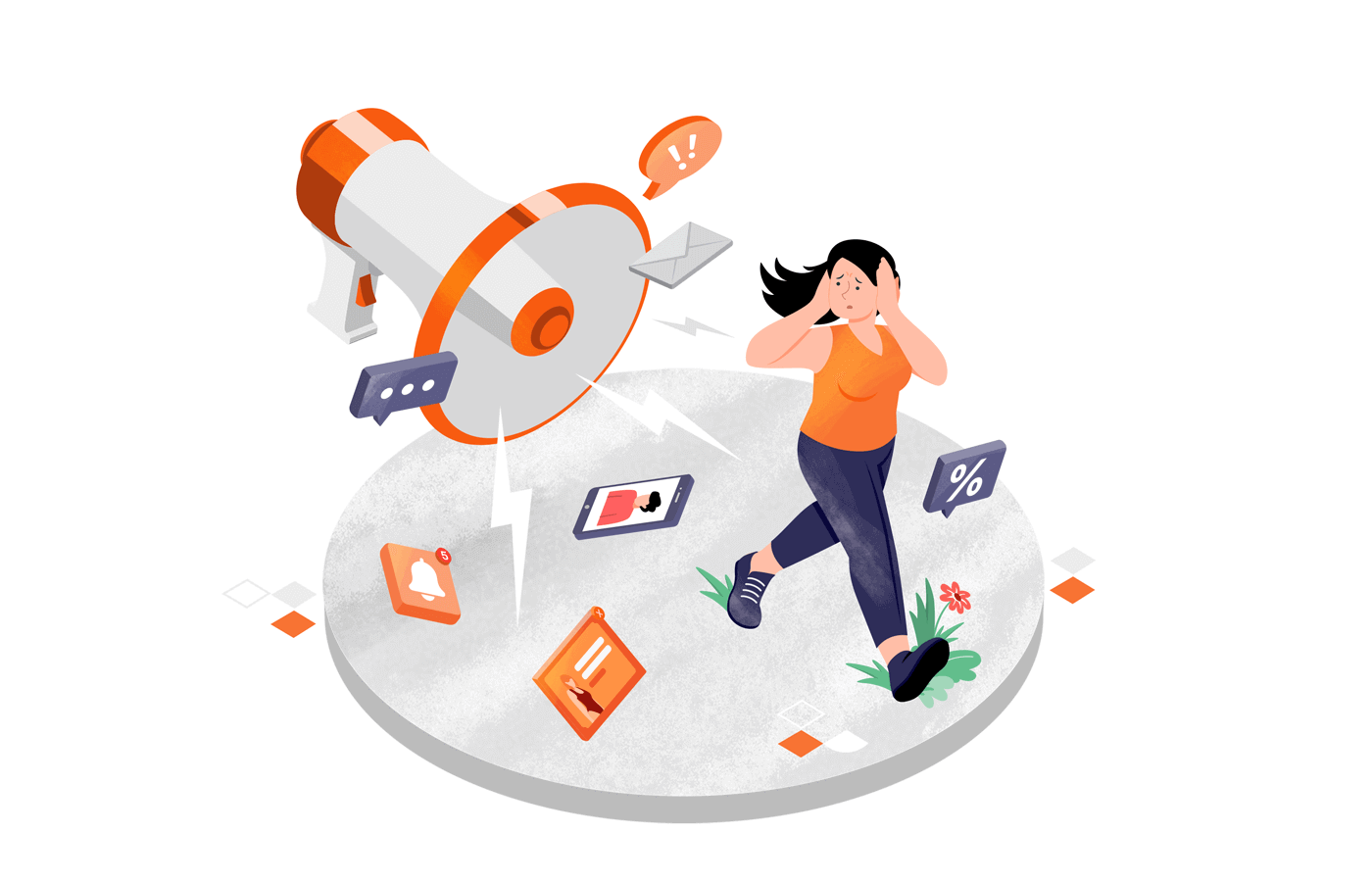Regardless of how good your product or service is, unless you are already a well-known business or brand, you need great marketing to help convey that to your prospective customers.
And no marketing discussion is complete without mentioning promotional marketing.
In this article, we answer the top questions related to promotional marketing and share how you can start using it effectively to grow your business.
What is Promotional Marketing?
Promotional marketing involves spreading information about a brand, product, or service through various marketing channels to make more people aware. It’s part of the marketing mix, alongside product, price, and place.
This type of marketing often involves promotional advertising aimed at increasing brand awareness and engagement, thereby generating leads and boosting sales revenue. Promotional marketing encompasses elements of both marketing and promotion. Don’t get confused; we’ve covered the fundamental difference between both for your convenience.
Marketing vs. Promotion Marketing
Marketing and promotion are two distinct yet interconnected concepts in the business world. Marketing includes broad strategic activities undertaken to identify, anticipate, and satisfy customer needs and wants. The marketing mix includes understanding the target market, developing products or services, setting prices, creating distribution channels, and implementing promotional strategies.
On the other hand, promotion is a subset of marketing that specifically focuses on communicating the value proposition to the potential customer. Promotion includes elements such as advertising, personal selling, sales promotion, public relations, and direct marketing.
| Marketing | Promotion | |
| Definition | Strategic activities to profitably identify, anticipate, and satisfy customer needs. | Tactics and activities to communicate and persuade the target audience about a product or service. |
| Scope | Broader, covering product development, pricing, distribution, and communication strategies. | Narrower, focusing specifically on communication and persuasive tactics. |
| Focus | Holistic customer-oriented approach to drive long-term customer satisfaction and loyalty. | Communication tactics aimed at generating short-term sales or creating awareness. |
| Components | Product, Price, Place, Promotion (4Ps) | Advertising, personal selling, sales promotion, public relations, direct marketing, etc. |
| Objective | Achieving organizational goals by creating customer value and fulfilling customer needs. | Generating awareness, interest, desire, and action towards a product or service. |
What Does Marketing Mix Mean?
The marketing mix is the definition of elements companies use in their marketing promotion strategy to achieve specific marketing focuses. It usually involves integrated marketing communications to reach the target market.
Such promotional marketing plan might include various elements like advertising campaigns, sales promotions (discount marketing, coupons, giveaways, flash sales, bundle deals, etc.), referral marketing, event marketing, product placement, and branded merchandise.
These tactics aim to stimulate demand, raise brand promotion, and enhance customer engagement, ultimately driving sales and customer retention.
Types of Promotional Marketing
Promotional marketing includes various tactics and activities to create awareness, generate interest, and drive action toward a product or service. Here are different promotion types:
| Type | Description |
| Advertising | Using paid media channels to promote products or services to a wide audience. It can be done through television, radio, print, outdoor billboards, online display ads, and social media. |
| Sales Promotion | Short-term incentives are designed to encourage immediate purchase or action. This includes discounts, coupons, rebates, free samples, loyalty programs, contests, giveaways, and limited-time offers |
| Personal Selling | One-on-one communication between a salesperson and potential customer to build relationships, address inquiries, and persuade individuals to make a purchase. This can be done face-to-face, over the phone, or through online platforms |
| Public Relations | Utilizing media and communication channels to manage the reputation and image of a brand. It involves activities such as press releases, media coverage, sponsorships, events, community relations, and crisis management. |
| Direct Marketing | Direct communication with targeted individuals or organizations through channels such as email, direct mail, telemarketing, SMS marketing, and personalized messaging. It allows for direct response and personalized offers. |
| Content Marketing | Creating and distributing valuable and relevant content to attract and engage a target audience. It includes blog posts, articles, videos, infographics, podcasts, and social media content that provide information and solutions related to the brand’s products or services. |
| Influencer Marketing | Collaborating with individuals with a significant following and influence on social media platforms. Brands leverage the reach and credibility of influencers to promote their products or services to their engaged audience. |
| Guerrilla Marketing | Unconventional and low-budget tactics that aim to create a memorable and buzz-worthy experience. It often involves surprise elements, unconventional locations, and interactive campaigns to grab attention and generate word-of-mouth. |
| Loyalty Programs | Rewarding repeat customers for their continued business. This can involve points systems, exclusive discounts, early access to new items, or other perks that encourage customer retention. |
| Merchandising | The strategic display and promotion of products in a retail environment to attract customers and maximize sales. This includes shelf placement, product displays, point-of-purchase displays, and in-store signage. |
| Cause Marketing | A company partners with a non-profit or social cause to advance the cause and simultaneously increase brand awareness and profits. This mutually beneficial collaboration allows companies to demonstrate social responsibility while achieving business objectives. |
Promotional Goals in Marketing
Promotional marketing offers a versatile toolkit for businesses aiming to increase brand awareness and ultimately generate sales. While its core objective is driving revenue growth, promotional marketing achieves this by focusing on key outcomes, such as:
- Attracting new customers;
- Expanding market penetration;
- Generating demand;
- Stimulating interest;
- Informing and educating prospects and customers;
- Encouraging repeat customers;
- Building customer loyalty;
- Gaining competitive advantage;
- Differentiating products or services;
- Promoting new products or services.
How to Organize a Promotional Campaign?
If you want your promotional ideas to turn out successful, you have to have a well-thought-out plan first. Here’s a quick overview:
Define Clear Objectives
Before diving into your marketing campaign, establish precise goals. Are you aiming to boost brand awareness, drive sales for a new product, or re-engage existing customers? Clearly defined objectives will guide your strategy and help you measure success.
For example, if you want to increase website traffic by 20%, that becomes a measurable target for your promotional efforts.
Identify Your Target Audience
Understanding your potential customers is crucial. Who are you trying to reach? Consider their demographics, interests, and online behavior. This understanding will help you tailor your promotional content and choose the most effective channels to reach them.
For instance, if you’re promoting webinar promotions, identifying companies or individuals who would benefit most from the content is key.
Plan and Allocate a Budget
Determine how much you can realistically spend on your campaign. This includes costs for advertising, creative development, free samples or gifts, and any necessary tools or platforms. Allocating funds wisely ensures you maximize your return on investment.
Select Appropriate Promotional Channels
Today, numerous options exist, from social media and email marketing to mobile devices and influencer collaborations. Choose channels where your target audience spends their time. For a global reach, explore online advertising and social media platforms. For more one-to-one communication, consider email marketing or even direct mail for a personalized touch.
Launch and Monitor Performance
Once your campaign is live, continuously track its performance. Analyze website traffic, social media engagement, sales figures, and other relevant metrics. This allows you to identify what’s working, what’s not, and make necessary adjustments along the way.
For example, if a particular social media post is very popular, consider allocating more budget to promote it. If email subscribers aren’t engaging with your content, it might be time to refresh your approach.
10 Top Promotional Marketing Strategies
There are so many different paths one can take regarding promotional marketing. The sheer abundance of marketing channels through which you can execute your well-thought-out marketing strategies is mind-boggling, especially when promoting an online business using digital marketing.
Here are some of the top marketing channels for executing your promotional strategies.
Email Marketing
Businesses can increase their ROI by 4,300% on average with strategic e-mail marketing.
Email marketing is the process of communicating with your subscribers over email sequences. It gently persuades your subscribed prospects to go from one touchpoint to another until they become a paying consumer. Effective email communication can help enhance customer loyalty and improve customer retention.
You could use your regular email newsletters to convey industry news and updates or use promotional emails to promote local events relevant to your target audience or a flash sale. In addition, triggered email marketing campaigns can be used to send post-purchase emails, abandoned cart emails, automated birthday greetings, and more.
Want to enjoy extremely high ROI? Then you’re in the right place; try Sender for free and get sweet features – drag-and-drop email builder, email automation, popups, segmentation, and much more!
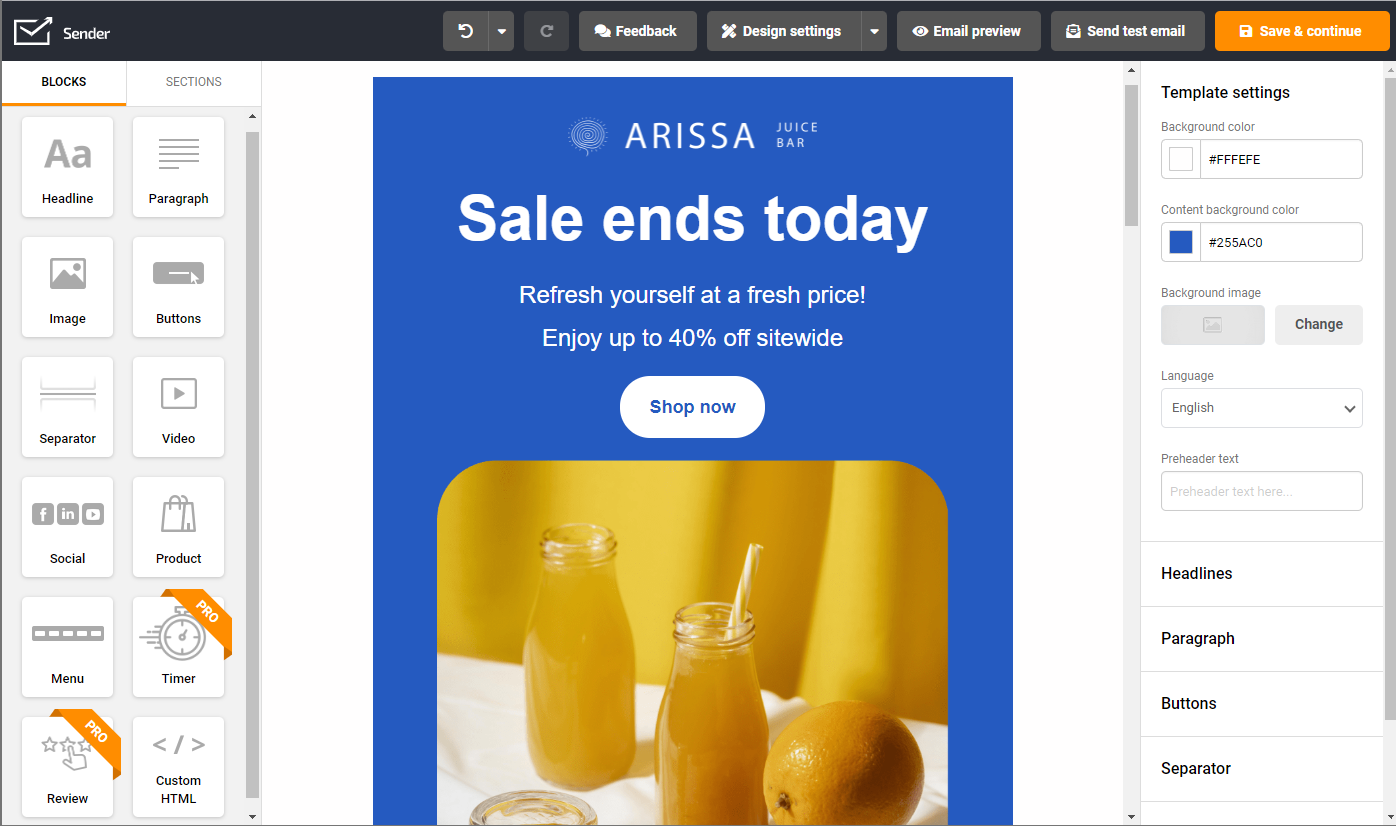
Social Media Marketing
Approximately two-thirds of U.S. adults (69%) report being Facebook users, with about 4/5ths (81%) also using YouTube regularly.
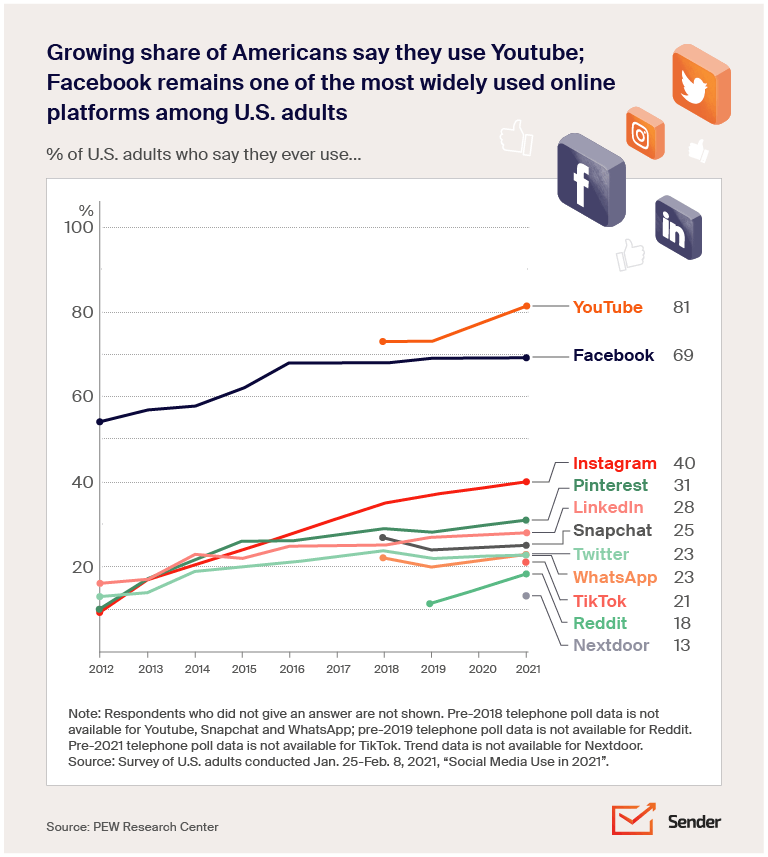
Social media marketing has both free and paid angles. Never choose a social media platform based on how popular it is. The most critical question you need to be asking yourself time and time again is: Where does my target audience hang out?
If you don’t have an answer, chances are you don’t have a (clearly defined) buyer persona document either. So do the work there first, which will automatically lead you to the right choice of social media platform.
For example, B2B businesses of many niches are discovering tremendous traction with LinkedIn organic posts. B2C works great with paid Facebook advertising, while sometimes the best way to advertise is not to advertise at all.
Optimization possibilities could see you create chatbots for Facebook or Instagram, so your brand’s representatives do not have to interact with every prospect LIVE for the most commonly asked questions.
While you can launch targeted advertising campaigns for the main part, you could also use it to receive customer reviews and feedback.
Content Marketing
81% of marketers view content as a core business strategy (CMI).
Content marketing uses high-quality content to attract and nurture leads, gently letting them slide inside your marketing funnel from one touchpoint to another.
Content marketing is evergreen and will be a key component of your online marketing. Whether you are providing expert tips over a podcast or interviewing valued guests over your YouTube channel, the idea is to use valuable content to help convert non-believers to believers over time.
Examples are blog posts, YouTube channels, podcasts, and more.
Influencer Marketing
Influencer marketing works on the premise that people buy from people first—especially those they trust.
The idea is to collaborate with influencers with a great following and get them to promote your product or services to their followers for a fee. Depending upon the niche and following of the influencer, this can result in very high conversion rates.
Influencers can be bloggers, thought leaders of your niche, or youtube channel owners with millions of followers. But more importantly, they are your brand ambassadors who get your business in front of the ideal target audience.
Don’t worry about affordability. Even as a start-up, you can punch in the correct Instagram tags to search for them and get started on a tiny budget with micro-influencers.
Referral marketing
Referral marketing is a type of promotional marketing where you promote your business’s products and services to new customers by word-of-mouth.
It relies on the fact that no one can sell your offering with greater enthusiasm than an existing user who loves using your product so much that they are not afraid or embarrassed to tell their friends and family about it.
Referral marketing is a high ROI channel because it leverages existing trust – because, ultimately, when it comes to buying a product or service online, over 92% of people strongly trust the opinions of their immediate family and friends about your products or services, which is why a customer loyalty referral program works.
You can run referral campaigns through a variety of channels that your existing customers and would-be prospects frequent, such as emails, social media
While you may have a high-quality product that easily sells itself, it may not be enough to make referral marketing work for you. Motivate existing users and customers with rewards, commissions, discounts, and bonuses to drive referrals.
Affiliate marketing
Affiliate marketing is when a third party (freelancer or another business) offers to promote and sell your product and gets paid only when you do.
Sounds very similar to referral marketing, doesn’t it?
The key difference is that while affiliate marketing involves third parties promoting your brand to drive customers to your business, a referral marketing strategy rewards your existing customers by encouraging them to refer their friends and immediate trust circle.
More importantly, for other forms of promotional advertising, you need an existing audience that has either already bought from you or is deeply interested in doing so.
But in the case of affiliate marketing, it is like launching your product using a sales and marketing team that you don’t need to pay. Pay them an initially agreed-upon commission only when the people they refer over, buy.
Affiliate marketing does not require you to have an existing audience at all, as a matter of fact, you’ll leverage the audience your affiliate partner already has.
On the other hand, for the affiliate partner that already has an audience that trusts them, this is an easy chance to make great sales as you can earn extra money on product sales without having to create anything of your own.
As with referral marketing, attribution and tracking should be extremely transparent and payouts timely to make your affiliate campaign sales a success.
Furthermore, affiliate marketing allows you to significantly scale your earnings without hiring additional staff. You can innovate to reach out to a wider audience while your existing work continues to generate revenue in the background.
Public Relations
Public relations (PR for short) is the art of favorably positioning your brand or business through strategic, well-timed, and intentional communication.
It includes all strategic and tactical efforts to maintain a positive relationship with stakeholders, both inside and outside.
A crucial type of promotional marketing aims to win more mindshare in the minds of prospects, customers, employees, investors, and the industry as a whole.
Public relations encompasses a wide range of activities, including but not limited to:
- External Media relations;
- Internal communication;
- Crisis communications;
- Community relations;
- Public affairs;
- Online and social media communications.
The right PR strategy helps brands and businesses shine the right context on their efforts, visions, and goals and includes one or more of the following objectives:
- Creating product awareness through social media and email marketing campaigns;
- Generating interest and buy-in;
- Educating through media, articles, press releases, and the business’s website;
- Enhancing brand recognition
Viral Marketing
Typically a social media phenomenon, viral marketing is when an educative or entertaining piece of messaging or content is so well-received by your target audience that they proceed to reshare it with their networks, causing many unintended recipients to receive it as well by ‘trending’ it.
That’s not to say that virality cannot happen over emails. Look at a great example of an order confirmation email done right by CD Baby. It became so popular that customers shared it with their friends and family.
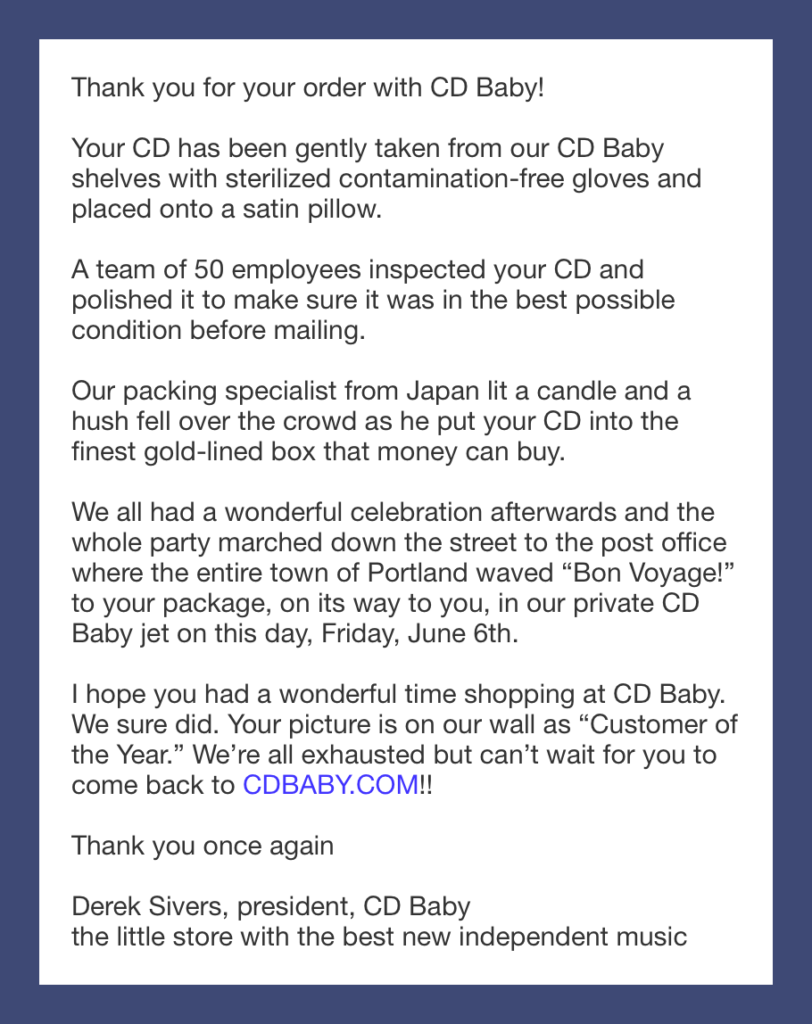
When it comes to social media platforms, some, such as Facebook, have limited organic reach and, therefore, less scope of virality. At the same time, others such as Twitter, LinkedIn, and Instagram have robust organic algorithms that act as powerful catalysts to help the right content go viral.
As obvious, viral marketing is difficult to plan and strategize for, much less guarantee, but it has its foundations in being able to understand the pulse of what your market responds to best and then send out high-quality messaging that addresses the gap in a way no one has so far.
Direct Marketing
Direct marketing involves direct communication with potential customers via personalized email campaigns, direct mail, telemarketing, SMS marketing, and personalized offers.
Direct marketing allows brands to establish a direct relationship with their customers. One of the key benefits of direct marketing is its ability to generate a direct response from the target audience based on personalized offers.
Brands personalize their campaigns based on their target audience’s specific preferences, interests, and demographics, increasing the likelihood of capturing the recipient’s attention and driving desired actions.
By segmenting the audience, personalizing messaging, and including clear call-to-actions, brands encourage immediate action and track the response rates. This makes it easier to evaluate the return on investment (ROI) and assess the effectiveness of the campaigns.
Also, direct marketing enables brands to build and nurture long-term customer relationships. They can enhance customer loyalty, drive repeat purchases, and create brand advocates. Direct marketing also facilitates customer feedback and interaction, allowing brands to gather insights and improve their products or services based on customer preferences and needs.
6 Great Promotional Marketing Campaign Examples We Loved
Ever come across a marketing campaign that you thought was really outstanding? Maybe a contest that quickly went viral, or maybe a smartly placed upsell? These are our picks!
Nike’s Promotional Email
Featuring a simple yet eye-catching creative, Nike gets it spot on with the copy, too— minimal yet effective. The sense of urgency is clear, and the offer for FREE shipping makes it easier for die-hard fans to decide to buy.
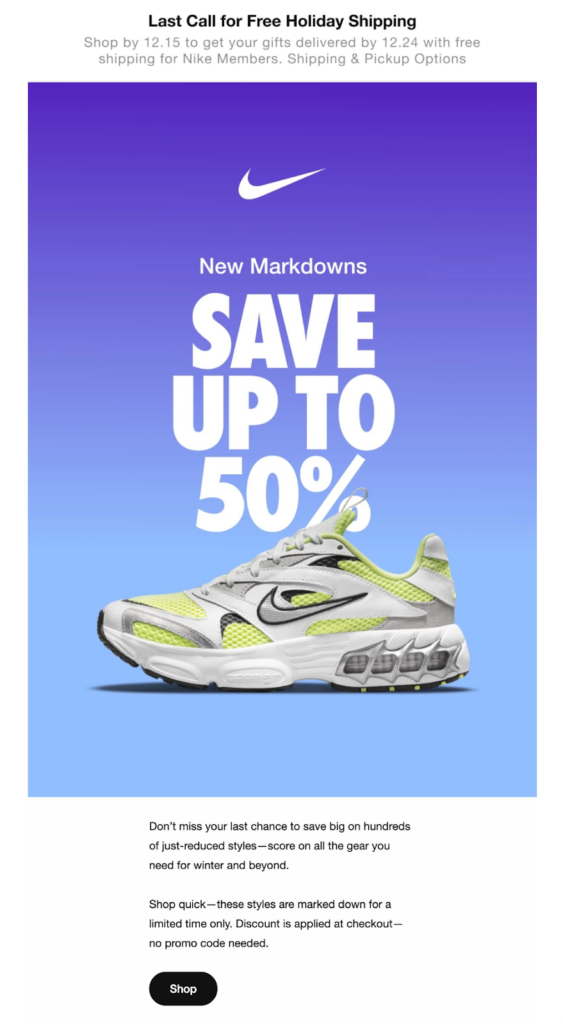
Starbucks Promotional Ad on Instagram
If you always wanted to gift your coffee-guzzling friend a gift but didn’t know what to do, Starbucks just made it a whole lot easier to decide!
The creative is nicely done, and the copy is written in alignment with the overall context of gifting on the occasion of someone’s birthday. What’s not to like?
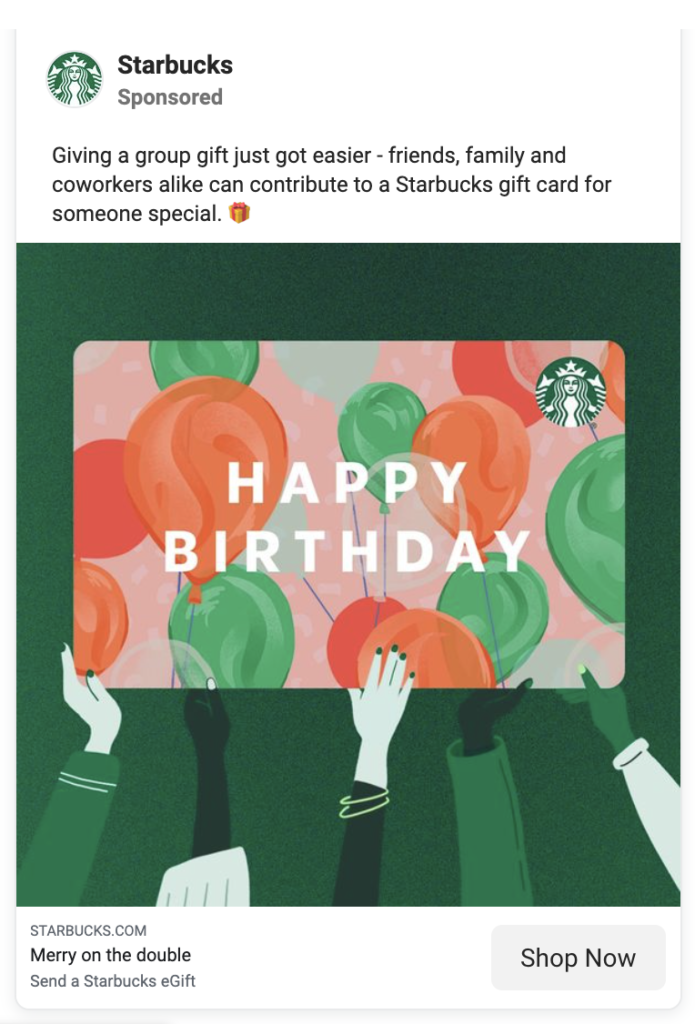
Coca-Cola’s “Share a Coke” Seasonal Campaign
Remember when Coke swapped their logo with names and fun phrases? That was the “Share a Coke” campaign.! It was all about finding your name (or a friend’s) on a bottle and sharing the experience, making Coke feel even more personal.

Apple’s Product Launch Keynotes
Apple’s product launch keynotes are basically tech’s version of the Super Bowl. This highly anticipated event occurs periodically throughout the year, and everyone tunes in to see what shiny new gadgets they’re unveiling and how those gadgets will supposedly change our lives.
Dove’s Personalized Offers for Valentine’s Day
Dove knows Valentine’s Day is all about treating your sweetheart (or yourself!). So, they swoop in with personalized offers on their silky smooth chocolate, making it extra tempting to share the love (and maybe a box of chocolates) with that special someone.
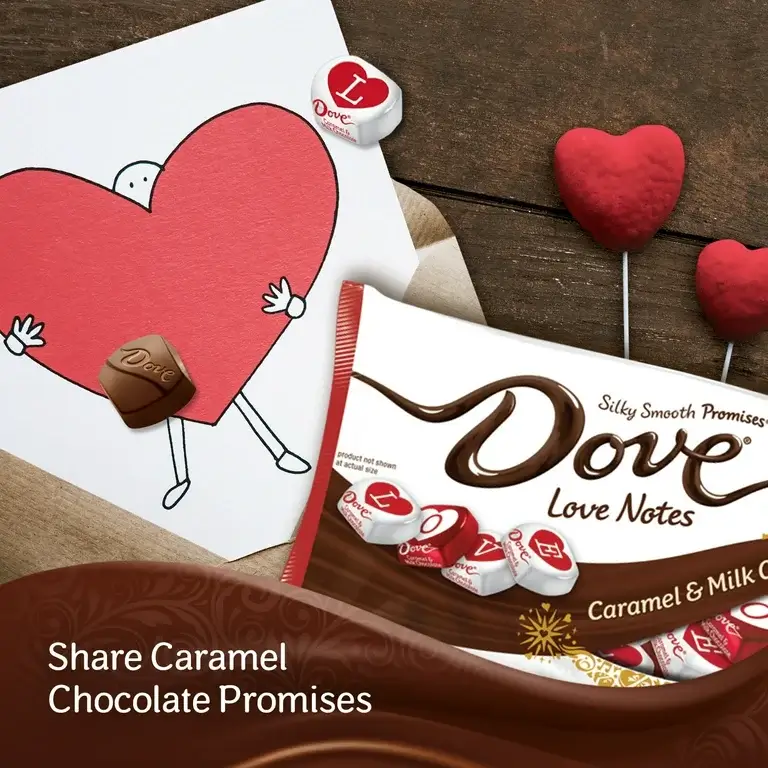
Airbnb’s Seasonal Promotions for Travel Deals
Airbnb knows we all crave a little getaway, especially during certain times of the year. That’s why they drop those sweet, sweet seasonal promotions! Think discounts for summer vacations, cozy cabin deals for the holidays, you name it – it’s all about inspiring you to book that trip.
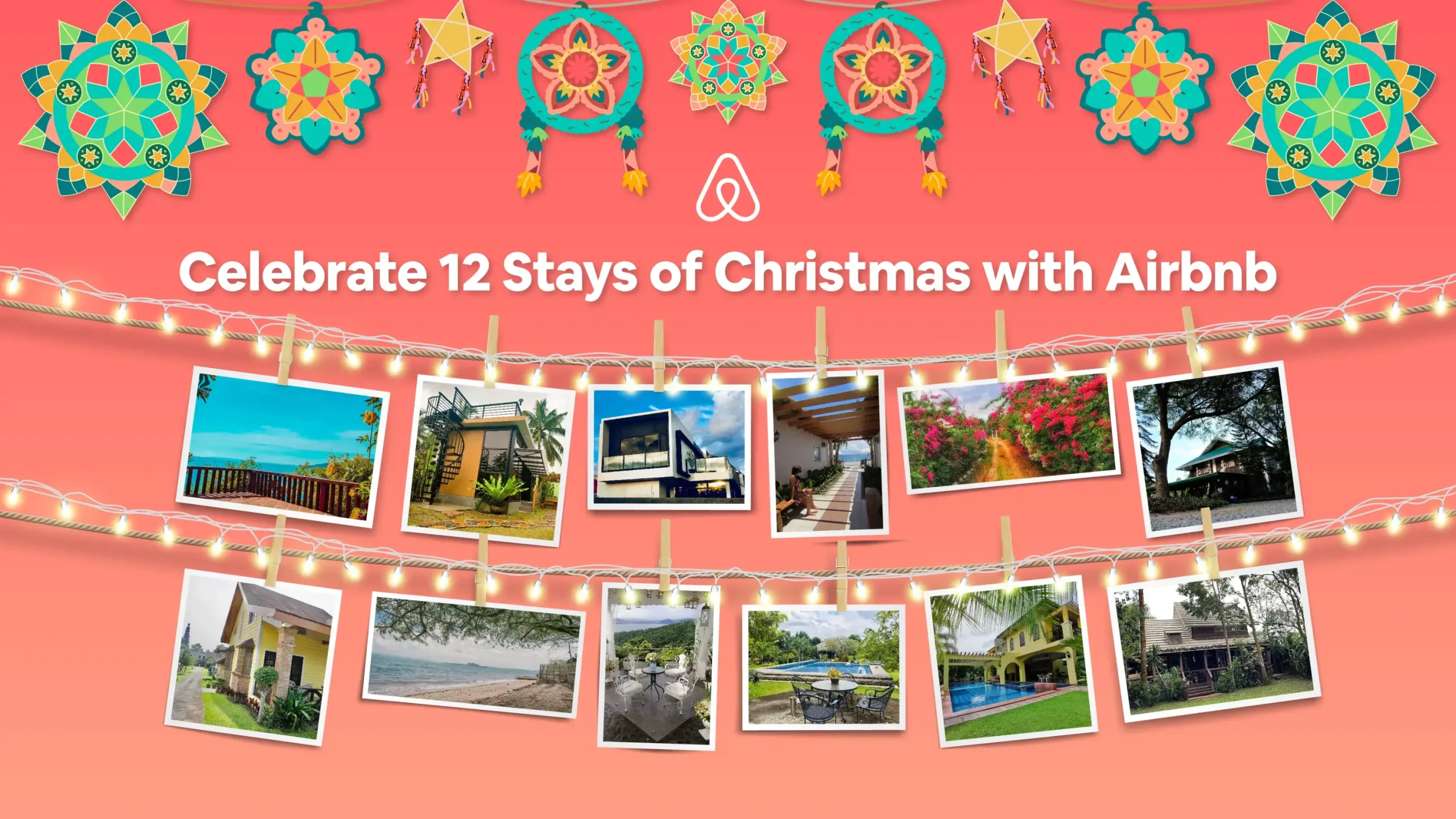
Dive deeper into promotional marketing with these valuable articles:
